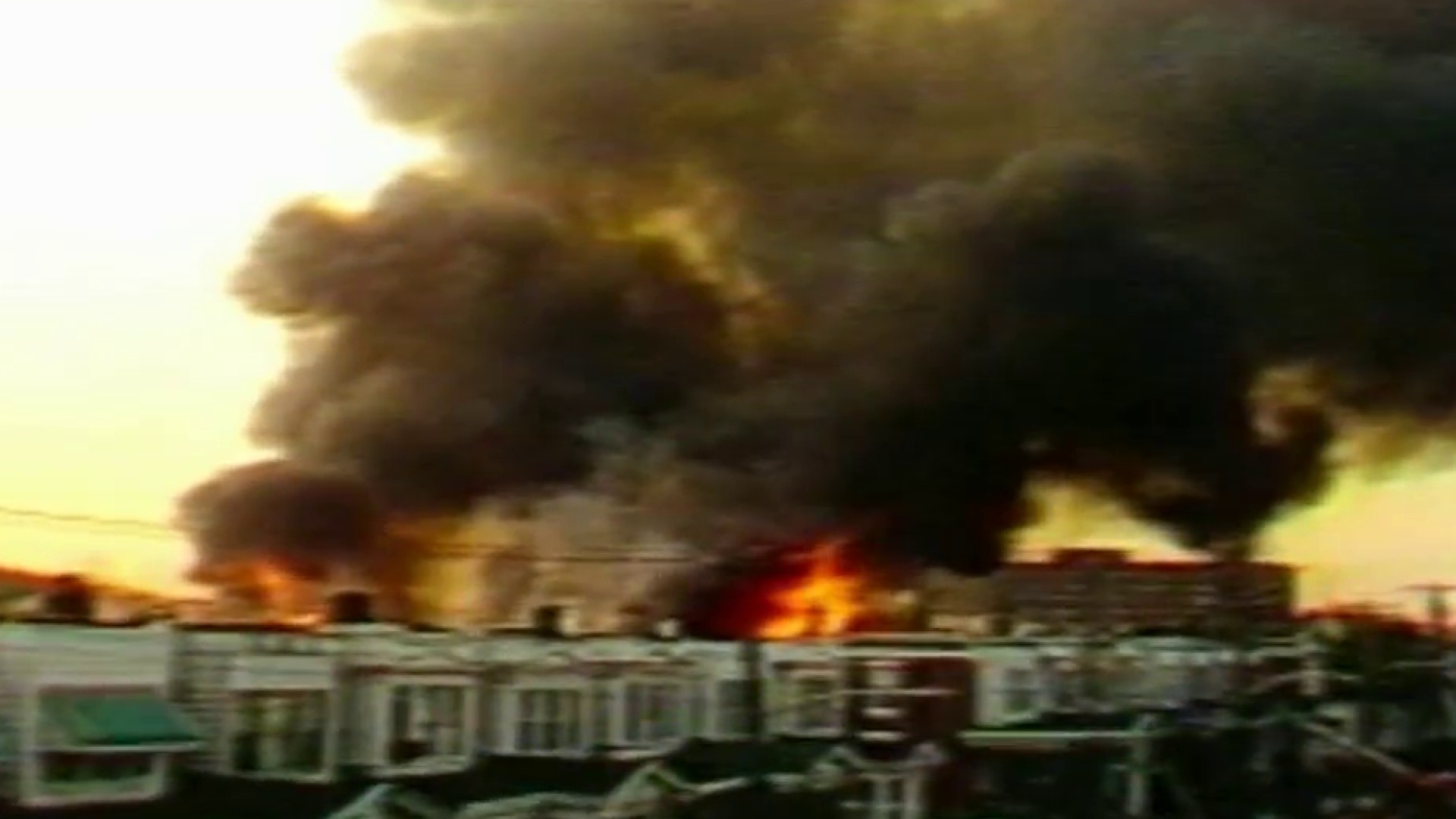May 13, 1985 is a day that changed Philadelphia forever.
On that day, police dropped a bomb on the MOVE compound on Osage Avenue in West Philadelphia, near Cobbs Creek, leaving 11 people, including children, dead. The ensuing fire destroyed the neighborhood and left decades of scars for everyone involved.
The armed confrontation between Philadelphia authorities and the radical group MOVE has boiled for years. The day before it escalated and by Monday morning the shooting had begun and ended as a bomb was dropped from a state police helicopter onto the group's row house at 5:27 p.m., igniting a fire that destroyed about 60 neighboring homes.
Get Philly local news, weather forecasts, sports and entertainment stories to your inbox. Sign up for NBC Philadelphia newsletters.
"May 13th is a day we should never forget," former NBC10 photojournalist Pete Kane, who was on the scene and shot some of the iconic video, said while looking back.
MOVE, short for The Movement, started in the late 1960s as a backlash to modernity. Members changed their last names to Africa — as a symbol of returning to their origins — and swore off modern conveniences. They also followed a strict 800-page manifesto and homeschooled their children.
By the 1970s, MOVE and Philadelphia police developed a contentious, and sometimes violent, relationship. MOVE members claimed they were regularly harassed, and police considered them a public nuisance, BillyPenn reports. By then the group had graduated to building their own explosives and were under investigation by the FBI.
MOVE was kicked out of its initial commune, which was located in Poweltown Village, and relocated to the 6200 block of Osage Avenue, where complaints from neighbors began to mount. On May 12, 1985, police evacuated neighbors from surrounding homes and tried to negotiate the group’s immediate removal. Shots were fired the next morning, tear gas thrown. Later in the day, a helicopter dropped the bomb on the house.
The ensuing fire burned throughout the night, consuming dozens of homes.
One of the survivors, Ramona Africa, spoke several years ago at a dedication ceremony as a historical marker was erected.
"We are very clear on the fact that what happened ... had nothing to do with Osage residents," she said.
The MOVE bombing victims have remained in the spotlight for the past several years as their deaths were ruled homicides in 2022.
A year earlier, MOVE members learned that that decades ago, the city medical examiner gave human remains from the bombing site to Penn Museum for identification, sparking protests and outrage.
Former health commissioner Thomas Farley later revealed that he had ordered the remains, thought to be bone fragments, cremated in 2017. However, the remains were not destroyed after all. A subordinate of Farley's in 2017 decided not to follow the commissioner's orders and saved the remains, a lawyer involved with the family of the victims said.
The ordeal led to Farley’s ouster.
Some of the remains were eventually returned to other members of the Africa family. Later, the city returned the remains of two child victims of the bombing to their brother. Since then, that surviving family member has sued.




